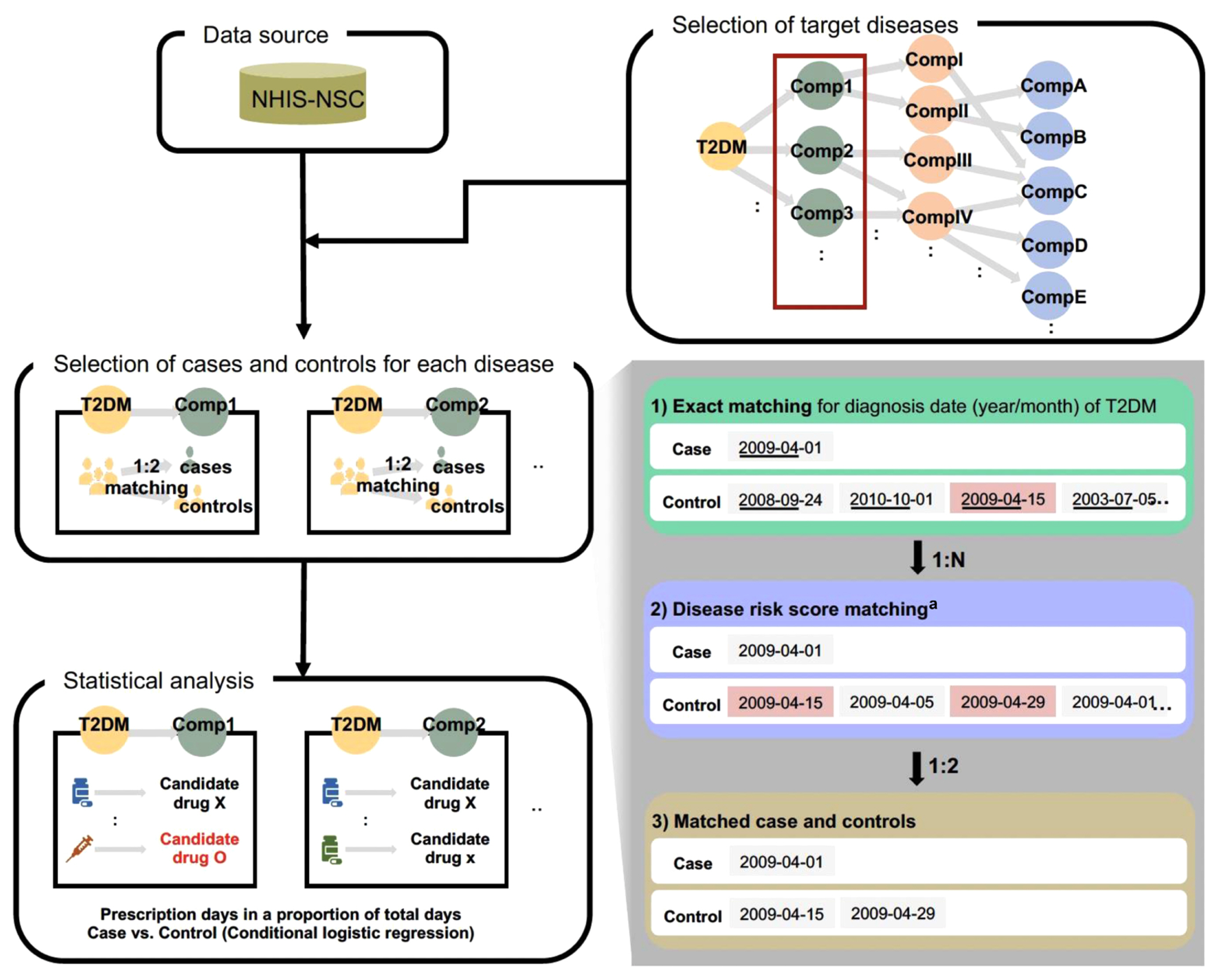- Diabetes, Obesity and Metabolism
Big Data Articles (National Health Insurance Service Database)
- Drug Repositioning Using Temporal Trajectories of Accompanying Comorbidities in Diabetes Mellitus
-
Namgi Park, Ja Young Jeon, Eugene Jeong, Soyeon Kim, Dukyong Yoon
-
Endocrinol Metab. 2022;37(1):65-73. Published online February 8, 2022
-
DOI: https://doi.org/10.3803/EnM.2021.1275
-
-
3,791
View
-
164
Download
-
2
Web of Science
-
1
Crossref
-
 Abstract Abstract
 PDF PDF Supplementary Material Supplementary Material PubReader PubReader  ePub ePub
- Background
Most studies of systematic drug repositioning have used drug-oriented data such as chemical structures, gene expression patterns, and adverse effect profiles. As it is often difficult to prove repositioning candidates’ effectiveness in real-world clinical settings, we used patient-centered real-world data for screening repositioning candidate drugs for multiple diseases simultaneously, especially for diabetic complications.
Methods
Using the National Health Insurance Service-National Sample Cohort (2002 to 2013), we analyzed claims data of 43,048 patients with type 2 diabetes mellitus (age ≥40 years). To find repositioning candidate disease-drug pairs, a nested case-control study was used for 29 pairs of diabetic complications and the drugs that met our criteria. To validate this study design, we conducted an external validation for a selected candidate pair using electronic health records.
Results
We found 24 repositioning candidate disease-drug pairs. In the external validation study for the candidate pair cerebral infarction and glycopyrrolate, we found that glycopyrrolate was associated with decreased risk of cerebral infarction (hazard ratio, 0.10; 95% confidence interval, 0.02 to 0.44).
Conclusion
To reduce risks of diabetic complications, it would be possible to consider these candidate drugs instead of other drugs, given the same indications. Moreover, this methodology could be applied to diseases other than diabetes to discover their repositioning candidates, thereby offering a new approach to drug repositioning.
-
Citations
Citations to this article as recorded by  - Drug Repositioning: Exploring New Indications for Existing Drug-Disease Relationships
Hun-Sung Kim
Endocrinology and Metabolism.2022; 37(1): 62. CrossRef
|



